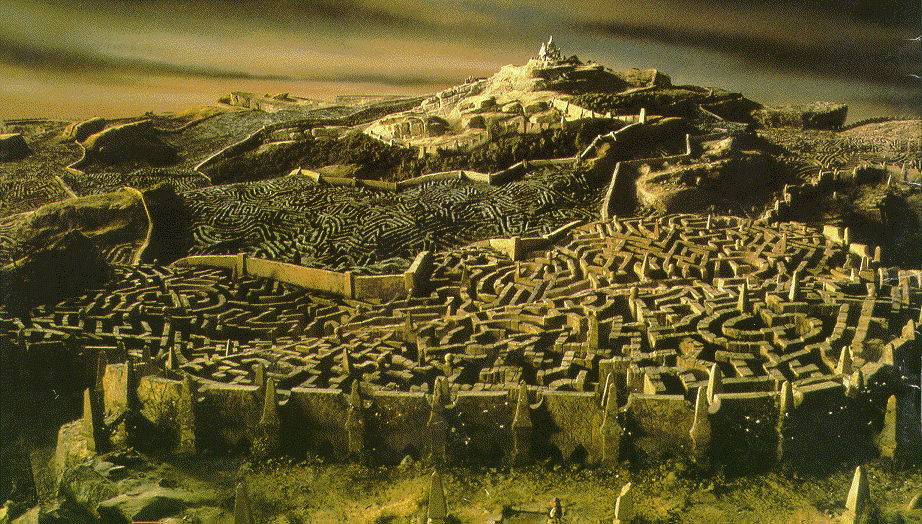(Following from here.)

(Following from yesterday's post.)
dungeon
dŭn′jən
noun
A dark, often underground chamber used to confine prisoners.
(American Heritage)
Keeping Things In
Try as they might, some threats cannot be permanently destroyed. For lack of a better alternative, they are sealed away. Others are sealed away for sentimental reasons, or because what afflicts them may yet be remedied but until they remain a threat to themselves and others. Still others are deemed too useful to destroy or are under protection of a greater power and are sealed into a prison arena where they are both punishment and punished.
No matter what the reason, the threat is jailed- thrown into a literal dungeon.
The fantasy dungeons of Advanced Dungeons & Dragons encompasses a lot more than underground jails. Crypts, tombs, and more are used as settings for fantastic adventures with high risks and commensurately high rewards. Jails are another common setting, and it is here that we see the dungeon overlap with the Monster Lair.
Only this is not a lair by the denizen's choice, but rather one forced upon its occupant. A dragon imprisoned in a dungeon isn't going to be festooned with treasure, sleeping on piles of coin and burnishing its scales with diamonds while cleaning its talons with magic swords. It will be chained in place, maybe kept sedated somehow, and very angry at whomever wakes it up.
And Player-Characters Make These?
They certainly can. From literal jails where some opponents are confined for one reason or another (ransom, awaiting sentance, etc.) to prisons where things unable to be put down are sealed away. The rules don't forbid it, and the game gives players the tools to make that possible, so it's going to happen sooner or later.
A Fighter takes a valuable enemy leader prisoner. You think he just ties him up and leaves him next to a post? No. He's going to toss him into a cell behind several layers of locks, traps, and guards until there's a ransom paid, the prisoner gets handed to someone else, or he has reason to put the prisoner to the sword. That means spending gold and time building a facility, staffing it, securing it, and keeping it up- and there's your player-created dungeon.
A Cleric traps a demon. He seals the widget containing the demon in some prepared vault, drowns the widget in wards and traps and locks, puts it behind several more layers of the same plus adds some form of security detail to keep would be retrievers out and the demon in. There's another.
A Magic-User pulls off a big stunt and manages to create a big-boy automaton to smash giants and dragons with. In addition to the usual array of security measure to ensure that only he, and whomever he designates, can control the thing he parks it in a secret chamber behind spells, traps, locks, and multiple forms of security details. There's a third.
The Thief? He breaks into and out of vaults and jails on the regular. He knows a thing or two about making effective ones, and if he makes big enough scores then he'll have all the reason in the world to build a better vault for his wealth and a better jail for his enemies.
The others follow obvious variations on these examples.
For the love of God, do not dissuade players from constructing their own dungeons. They're doing good work, playing true to their characters, and contributing to the campaign environment exactly as intended.
But there is one other thing a dungeon can be, and that I'll talk about tomorrow.
No comments:
Post a Comment
Anonymous comments are banned. Pick a name, and "Unknown" (et. al.) doesn't count.